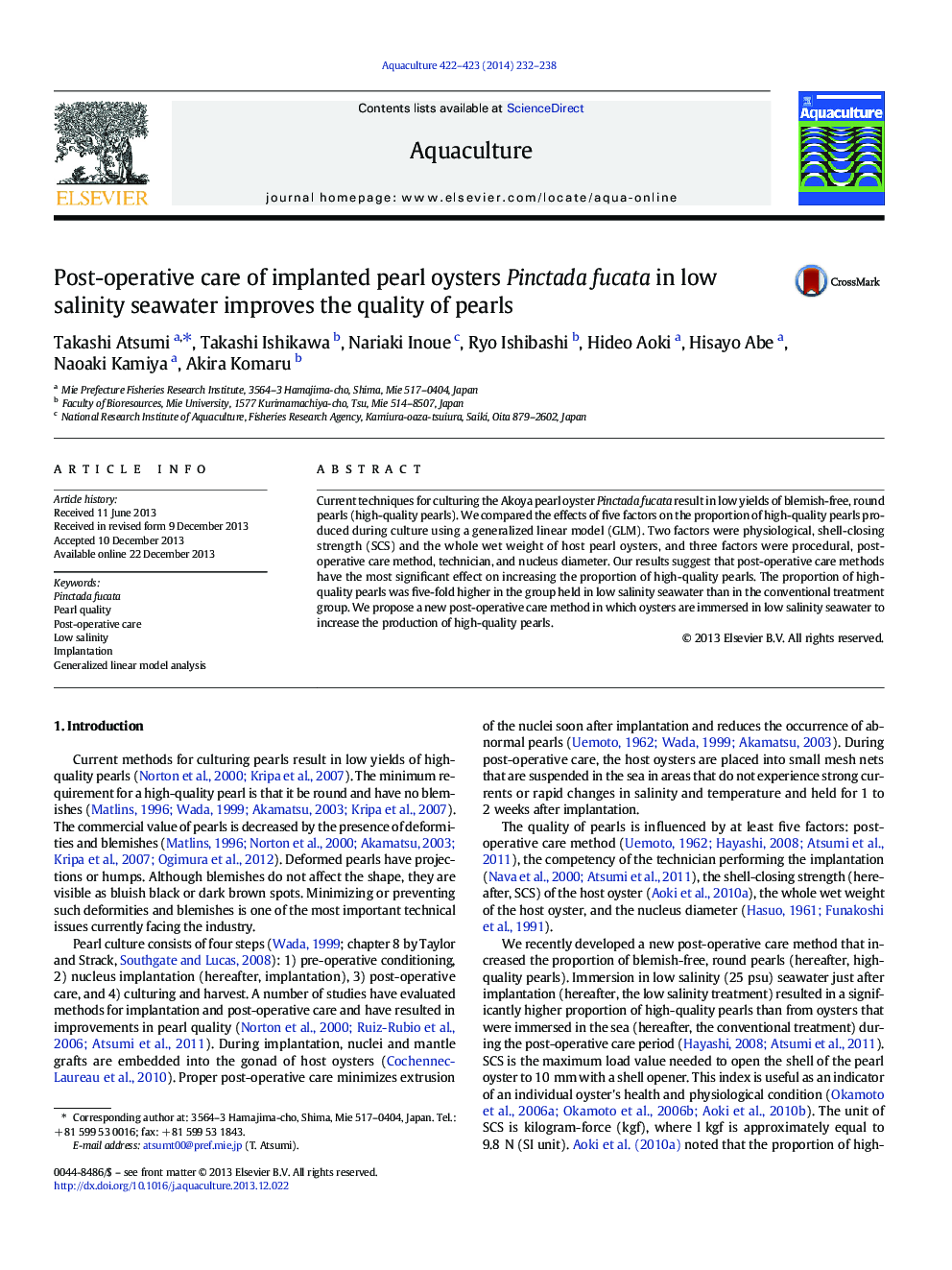| Article ID | Journal | Published Year | Pages | File Type |
|---|---|---|---|---|
| 2421961 | Aquaculture | 2014 | 7 Pages |
•We compare the effects of five factors on pearl quality using GLM analysis.•Post-operative care method (PO) exerts the most significant effect, followed by SCS.•PO in low salinity seawater increased the rate of high-quality pearls.•PO in low salinity seawater was recommended.
Current techniques for culturing the Akoya pearl oyster Pinctada fucata result in low yields of blemish-free, round pearls (high-quality pearls). We compared the effects of five factors on the proportion of high-quality pearls produced during culture using a generalized linear model (GLM). Two factors were physiological, shell-closing strength (SCS) and the whole wet weight of host pearl oysters, and three factors were procedural, post-operative care method, technician, and nucleus diameter. Our results suggest that post-operative care methods have the most significant effect on increasing the proportion of high-quality pearls. The proportion of high-quality pearls was five-fold higher in the group held in low salinity seawater than in the conventional treatment group. We propose a new post-operative care method in which oysters are immersed in low salinity seawater to increase the production of high-quality pearls.
